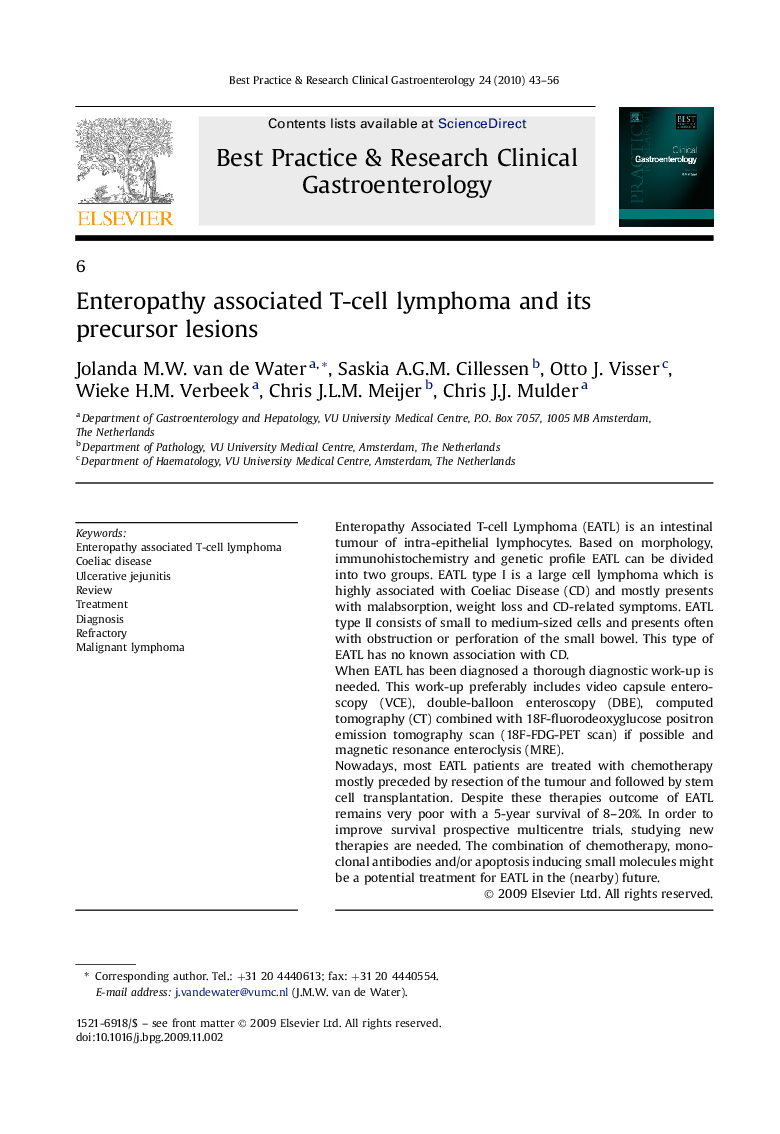| Article ID | Journal | Published Year | Pages | File Type |
|---|---|---|---|---|
| 3254399 | Best Practice & Research Clinical Gastroenterology | 2010 | 14 Pages |
Enteropathy Associated T-cell Lymphoma (EATL) is an intestinal tumour of intra-epithelial lymphocytes. Based on morphology, immunohistochemistry and genetic profile EATL can be divided into two groups. EATL type I is a large cell lymphoma which is highly associated with Coeliac Disease (CD) and mostly presents with malabsorption, weight loss and CD-related symptoms. EATL type II consists of small to medium-sized cells and presents often with obstruction or perforation of the small bowel. This type of EATL has no known association with CD.When EATL has been diagnosed a thorough diagnostic work-up is needed. This work-up preferably includes video capsule enteroscopy (VCE), double-balloon enteroscopy (DBE), computed tomography (CT) combined with 18F-fluorodeoxyglucose positron emission tomography scan (18F-FDG-PET scan) if possible and magnetic resonance enteroclysis (MRE).Nowadays, most EATL patients are treated with chemotherapy mostly preceded by resection of the tumour and followed by stem cell transplantation. Despite these therapies outcome of EATL remains very poor with a 5-year survival of 8–20%. In order to improve survival prospective multicentre trials, studying new therapies are needed. The combination of chemotherapy, monoclonal antibodies and/or apoptosis inducing small molecules might be a potential treatment for EATL in the (nearby) future.
